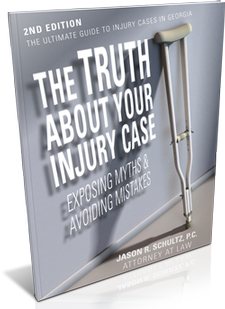Who Pays a Personal Injury Claim
Usually, insurance companies, not individuals, pay successful personal injury claims. For example, in a car accident, let us say the car behind you rear-ended your vehicle. The police officer discovered that the driver behind you had been texting at the time of the crash. The officer ticketed that driver and blamed him for the wreck in the police report. You exchanged insurance information with the at-fault driver, and the officer released both of you to leave the scene.
You got medical attention and notified your insurance company. The insurance company assigned a claims adjuster to the case. That person contacted the at-fault driver’s insurance company and informed them that they will be responsible for your damages. You completed your medical treatment and your lawyer negotiated a settlement with the negligent driver’s insurance company. That is how a simple personal injury claim works.
What Happens When the At-Fault Driver is Uninsured or is a Hit-and-Run?
Sometimes your insurance will pay for your injuries, such as when the liable driver does not have insurance or drives away from the scene illegally, and you have uninsured motorist coverage. We will explore the possible sources of compensation for you and work with the insurance companies to get you a fair settlement.
What Negligence Means
Negligence means that someone did something they should not have or failed to do something they should have, and another person suffered loss or injury as a result. The law usually breaks down the analysis of negligence into three elements:
- Duty of Care: The person who injured you must have some legal obligation toward you. For example, all motor vehicle drivers have a responsibility to drive carefully and follow the laws and rules of the road.
- Breach of duty: When the person fails to perform his duty of care, he is negligent. Examples of the breach of duty, also known as negligence, are speeding, texting while driving, and driving while under the influence of alcohol or other drugs.
- Causation: The final element we must prove is that the person’s negligence caused your injuries. For example, if someone ran a red light and crashed into your car, that person is responsible for your injuries. If you happen to discover that another driver in the wreck had been drinking but did not cause the accident, you cannot sue that person because his negligence did not harm you.
How We Prove Your Case
We will use whatever evidence is relevant to your individual set of facts to build your case. In many cases, we use your medical records to show the extent of your injuries. In other cases, we might need to hire a medical expert or a vocational expert to prove the impact the harm has had on your life.
We establish lost income by using your employer’s records. If you have a different situation, such as self-employment, we can use expert witnesses to extrapolate your income from your files.
We build the case of liability by presenting the police report or other formal incident report. We can also use security camera footage, eyewitness testimony, and accident reconstruction experts.
Damages Available in Personal Injury Claims
Every case is different, so we cannot make a blanket statement about the compensation a person will get for an accident injury claim. We can, however, tell you some of the categories of damages that might be available, depending on the facts of your situation.
- Medical expenses: These are the cost of the ambulance, emergency room, urgent care center, hospital, surgery, treatments, doctors, prescription drugs, and physical therapy.
- Lost income: These are wages or other income you lost because of the accident, medical treatment, and recuperation time.
- Ongoing medical treatment or long-term care: In situations involving catastrophic injuries, you might need medical care long after the accident, or you might need daily assistance and medical treatments.
- Decreased earning potential or disability: Your injuries might mean that you can no longer make as much money as you did before the injury or you cannot support yourself through gainful employment.
- Pain and suffering. The mere payment of your out-of-pocket losses does not make you whole because it does not compensate you for the pain, mental anguish, and inconvenience you have suffered. Damages for pain and suffering, loss of enjoyment of life, and other losses address this issue.
What Happens if More Than One Person is At-Fault?
Georgia follows the legal principle of comparative negligence to decide who has to pay how much money when more than one person is at fault in an accident. The judge will determine the percentage of fault of each party. For example, if one person was texting while driving and ran into another driver who ran a red light, they were both negligent. Let us say that the judge assessed the texting driver with 40 percent fault and the driver who ran the red light with 60 percent fault.
Once you compare the fault, you reduce each person’s compensation in proportion to his negligence. So, the law will reduce the texting driver’s damages by 40 percent, to account for his fault. If his damages were $100,000, he will only get $60,000 because of the 40 percent reduction.
The 50-Percent Rule
Now, here is where the modified aspect of Georgia’s comparative fault law comes into play. In Georgia, if your negligence was 50 percent or more of the fault in an accident, you are barred from getting any money from the other negligent parties. The driver who ran the red light will get no compensation from the texting driver because he was responsible for 60 percent of the fault.
How to Get More Information on Personal Injury Claims
We will be happy to evaluate your situation and explain further how personal injury claims work. Please call the Law Office of Jason R. Schultz, P.C. at 404-474-0804, and we will set up your free consultation. We do not charge legal fees until you recover compensation.


